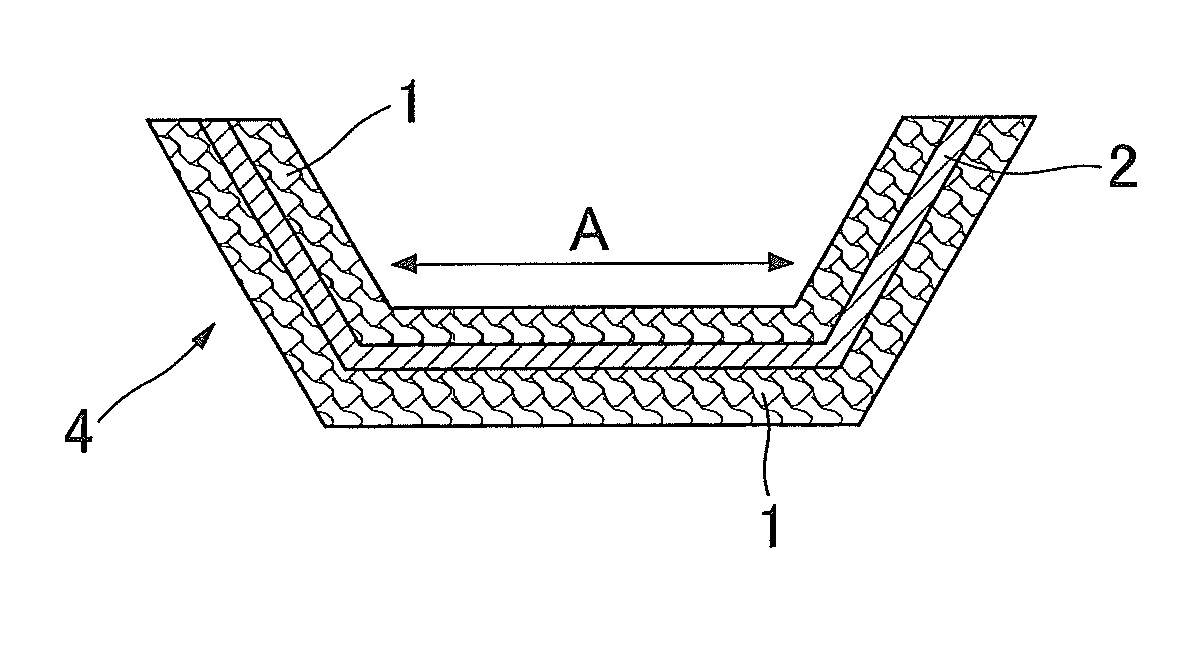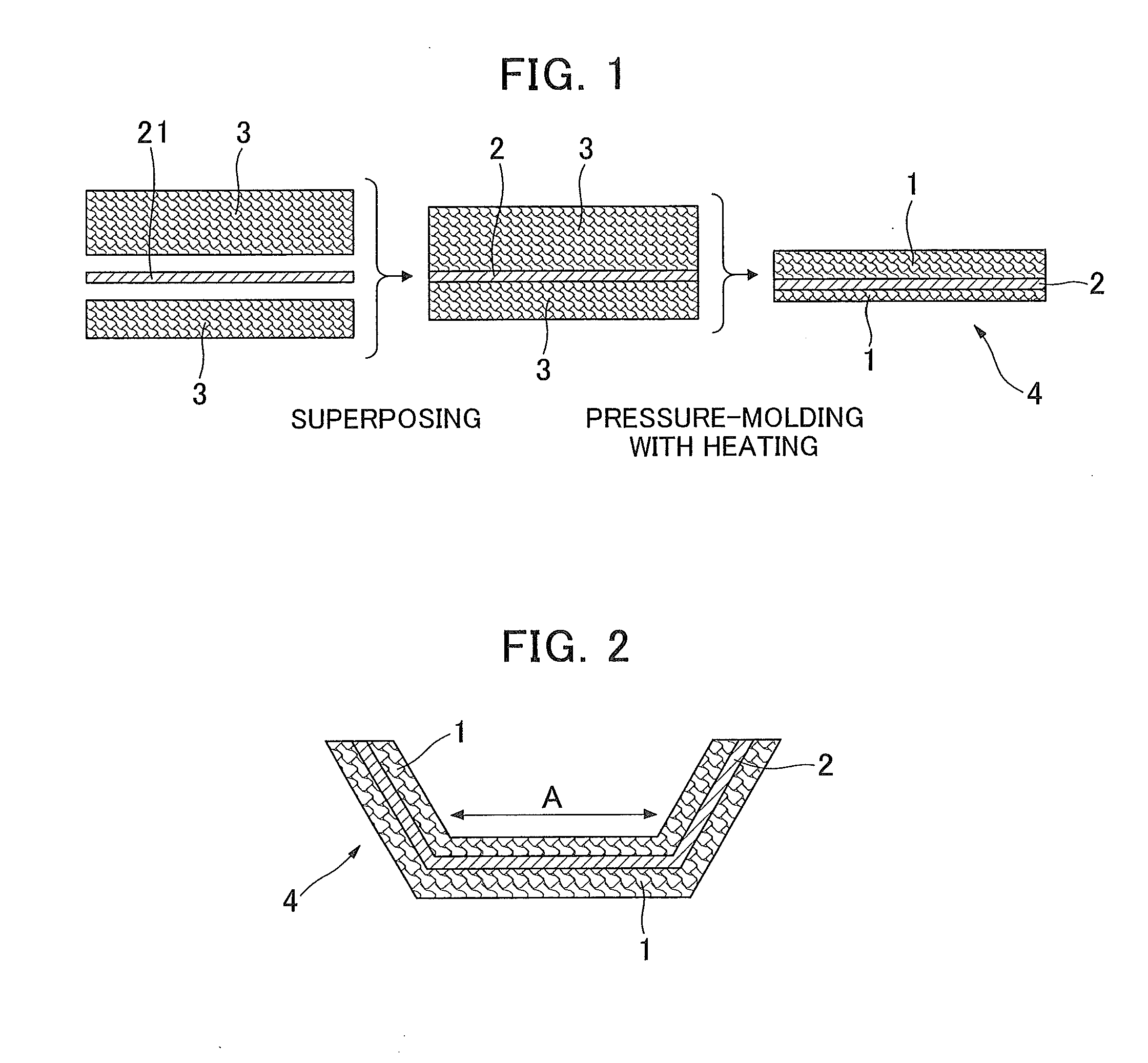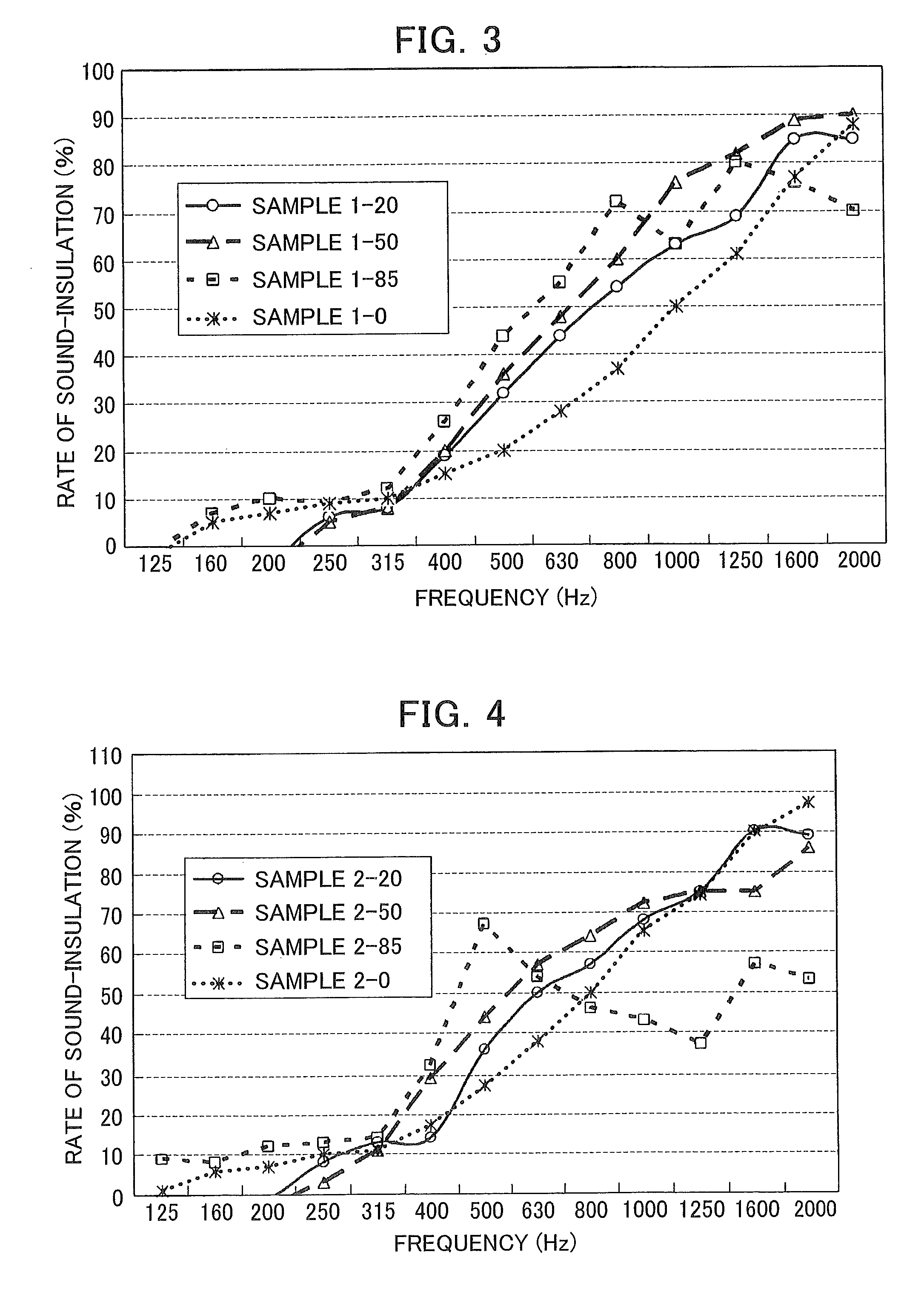Sound-insulating laminated structure and method for the production thereof
a technology of sound insulation and laminated structure, which is applied in the direction of walls, instruments, transportation and packaging, etc., to achieve the effect of excellent heat resistance and excellent insulation ability
- Summary
- Abstract
- Description
- Claims
- Application Information
AI Technical Summary
Benefits of technology
Problems solved by technology
Method used
Image
Examples
example
[0044]Short glass fibers each having an average diameter of 7 μm and an average length of 30 mm were prepared by the centrifugal spinning technique and an uncured water-soluble phenol resin (resol type one having a solid content of 30% by mass) was adhered to the spun short glass fibers by spraying the same on the fibers in an amount of 0.1 time (by mass) that of the short glass fibers using a spray gun. The short glass fibers provided with the uncured phenol resin adhered thereto were fed to a fiber-collector in which the fibers were integrated through aspiration to thus give a glass wool prepreg having a volume density of 16 kg / m3.
[0045]On the other hand, an aluminum metal foil having a predetermined thickness (20 μm, 50 μm and 85 μm) was sandwiched between two layers of the foregoing glass wool prepreg to form a superposed structure and then the superposed structure was heated to 250° C. for 200 seconds while applying a pressure of 2×105 Pa to thus give a laminated structure havi...
PUM
| Property | Measurement | Unit |
|---|---|---|
| Thickness | aaaaa | aaaaa |
| Thickness | aaaaa | aaaaa |
| Frequency | aaaaa | aaaaa |
Abstract
Description
Claims
Application Information
 Login to View More
Login to View More - R&D
- Intellectual Property
- Life Sciences
- Materials
- Tech Scout
- Unparalleled Data Quality
- Higher Quality Content
- 60% Fewer Hallucinations
Browse by: Latest US Patents, China's latest patents, Technical Efficacy Thesaurus, Application Domain, Technology Topic, Popular Technical Reports.
© 2025 PatSnap. All rights reserved.Legal|Privacy policy|Modern Slavery Act Transparency Statement|Sitemap|About US| Contact US: help@patsnap.com



